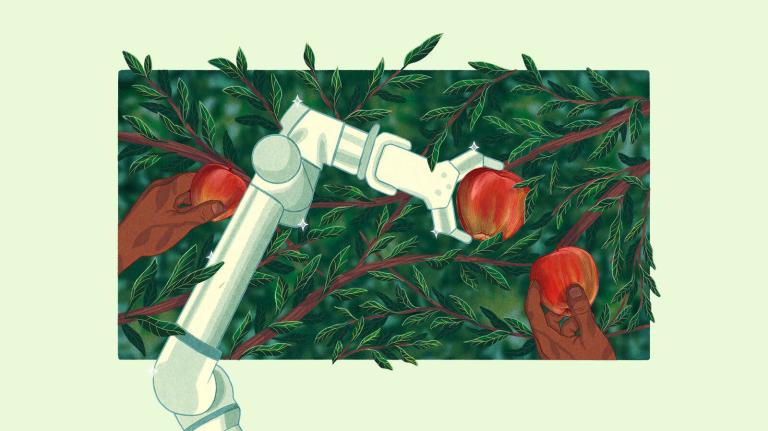We literally are what we eat; our metabolic function converts the stuff we consume into our material bodies: flesh, bone, hair, etc. In a memorable passage in Micheal Pollan’s Omnivore’s Dilemma, a biologist analyzes a strand of his own hair; he finds it shot through with corn’s unique carbon signature.
Materially speaking, eaters of the standard American diet are corn. Or, as the biologist tells Pollan, "When you look at the isotope ratios, [U.S. residents] are corn chips with legs."
Perhaps inspired by Pollan, University of Hawaii researchers A. Hope Jahren and Rebecca Kraft have released a study [PDF] through the Proceedings of the National Academy of Sciences on the carbon and nitrogen isotopes of fast-food chicken, beef, and french fries.
Their conclusion will not startle Pollan readers: Like the biologist’s hair sample, our major fast-food products are mainly just highly manipulated, transmogrified manifestations of corn. If the report offers little that’s surprising, it still makes interesting reading.
The researchers sampled burgers, chicken sandwiches, and fries from McDonald’s, Wendy’s, and Burger King franchises across the country.
They have a gift for tidily summing up key facts about fast food. For example:
By purchasing and eating 1 serving of the substrates of this study (i.e., 1 hamburger, 1 chicken sandwich, and 1 small order of fries), the consumer has gained 50% of that day’s recommended calories, 80% of carbohydrates, 75% of protein (90% if the consumer is a woman), and the full day’s limit of dietary fat at a cost of $3.
Wow — that’s a lot of bang for three bucks. No wonder fast-food sales are booming in this grim economy.
I suppose this is the money quote:
100% of the chicken and 93% of the beef sampled in this study had [a carbon signature] consistent with an exclusively corn-based diet.
Samples also showed heightened levels of nitrogen — reflecting the huge amounts of synthetic fertilizer that gets dumped on corn fields every year.
The study also has information about the distributors that supply the Big Three fast-food chains with meat. Turns out just three suppliers have sewn up this vast market — another sign of the intense consolidation of our food system.
A company called Martin-Brower supplies McDonald’s with beef, while BK and Wendy’s get theirs from Maines Paper and Food Service.
All three get their chicken from the same place: meat giant Tyson Foods. Thus the author’s detect "extreme homogeneity" in the carbon and nitrogen isotopes of the fast-food giant’s chicken products. In other words, all three are serving up the exact same same slop.
As for fries, the authors found that Wendy’s uses corn oil, while McDonald’s and Burger King use "other oils." The most significant thing I found in that section was this startling sentence:
French fries are manufactured by immersing preformed emulsified potato (Solanum tuberosum) meal in 190 °C fat for 3 min.
Wait a minute. "Preformed emulsified potato meal"? The fast-food chains aren’t using cut potatoes for their fries, but rather some sort of molded instant potato mix? I honestly didn’t know that. How lame.
Makes sense, though. To make real fries, you’ve got to cook them twice — and probably for longer than three minutes.
The authors didn’t get around to running their tests on soft drinks. They note, however, that the soft drinks served up by the chains are "dominantly sweetened with high-fructose corn syrup."
Vandana Shiva sometimes speaks of "monocultures of the mind" — the inability to think beyond the limits of industrial agriculture. The fast food chains are serving up monocultures of the waistline — not-so-clever, vastly wasteful, and monumentally unhealthy tweaks on one big crop: corn.

